
How to Use FireBeetle ESP32: Examples, Pinouts, and Specs
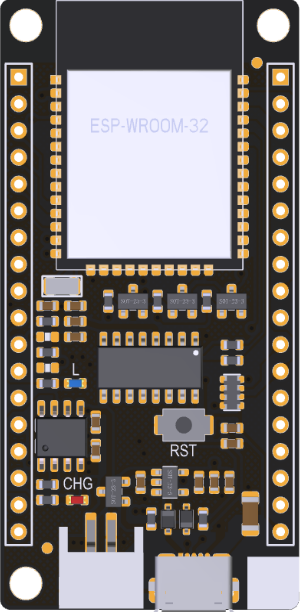
 Design with FireBeetle ESP32 in Cirkit Designer
Design with FireBeetle ESP32 in Cirkit DesignerIntroduction
The FireBeetle ESP32 is a compact development board manufactured by DFRobot (Part ID: ESP32). It is powered by the ESP32 microcontroller, which features dual-core processing, built-in Wi-Fi, and Bluetooth capabilities. Designed specifically for IoT applications, the FireBeetle ESP32 is an excellent choice for prototyping and embedded projects. Its low power consumption, multiple GPIO pins, and compatibility with a wide range of sensors and modules make it a versatile tool for developers.
Explore Projects Built with FireBeetle ESP32
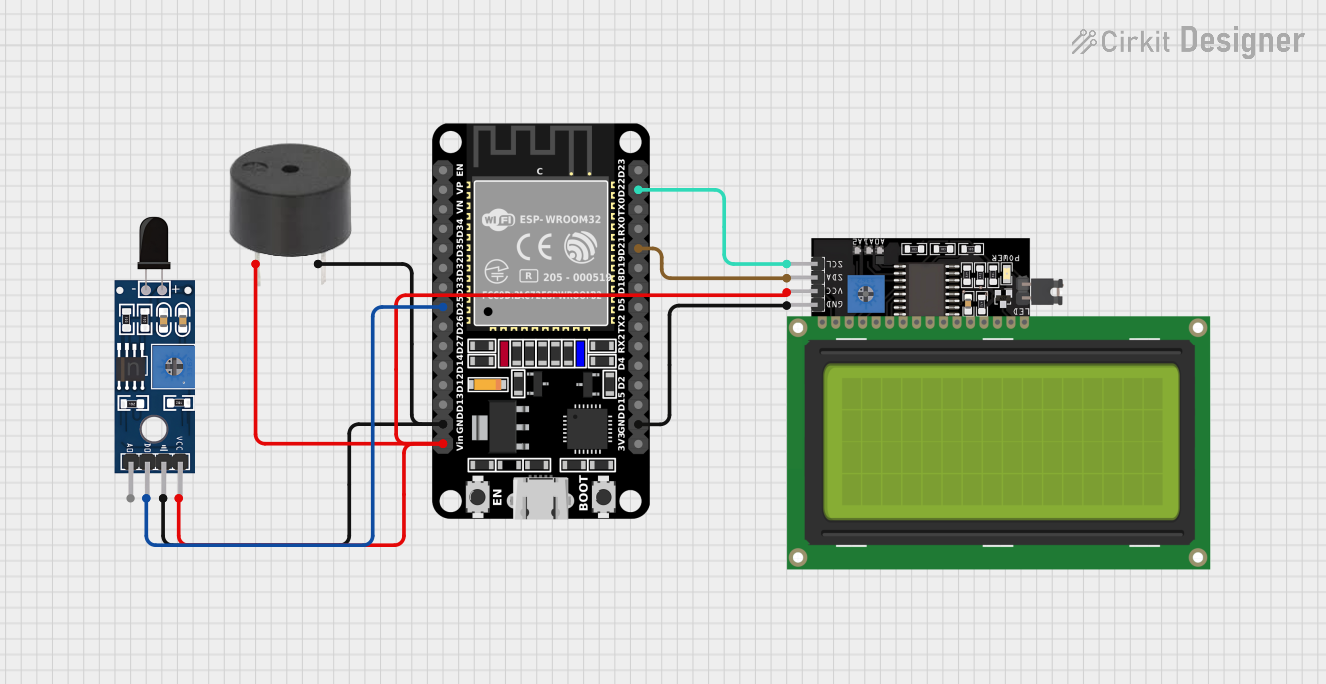
 Open Project in Cirkit Designer
Open Project in Cirkit Designer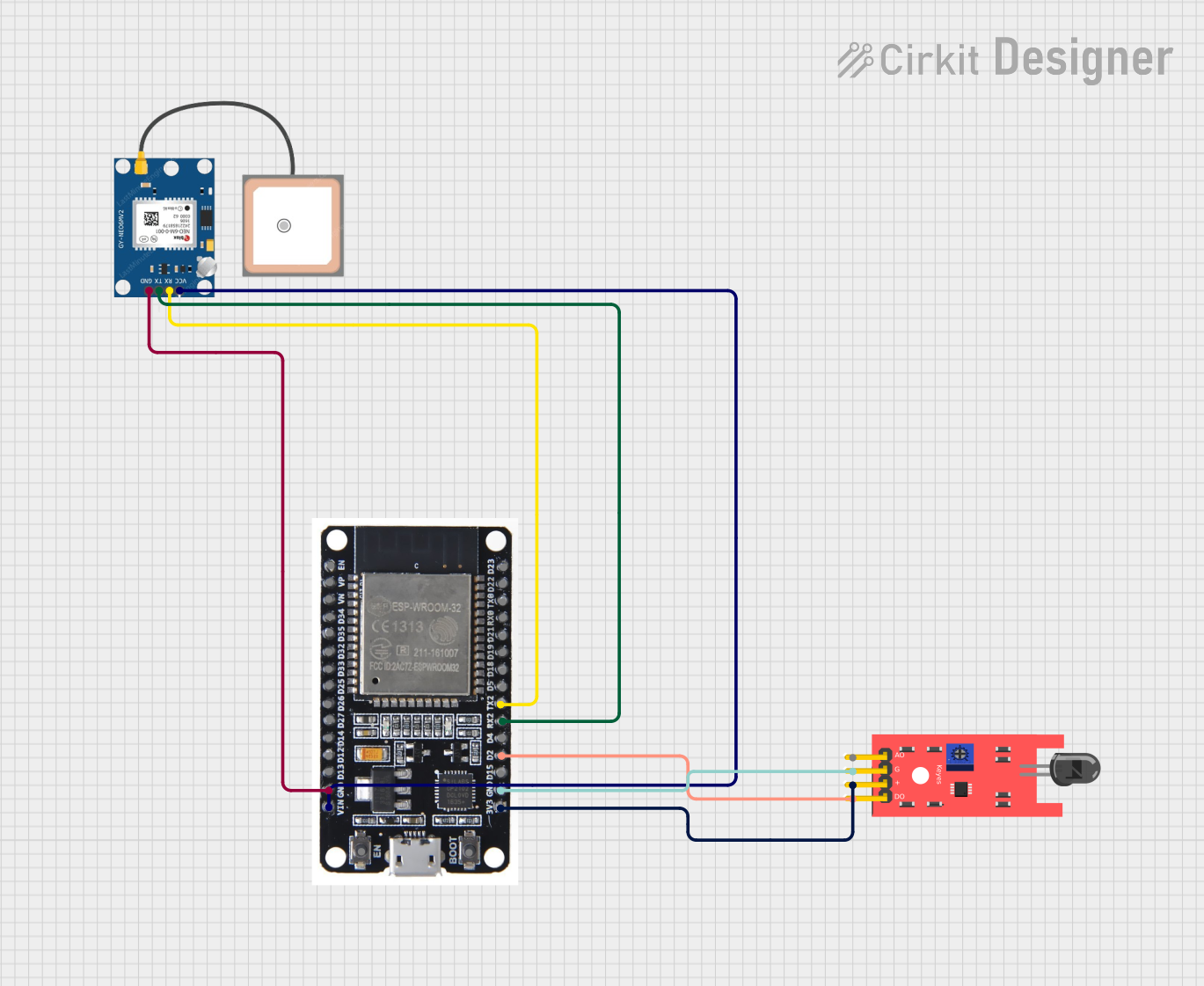
 Open Project in Cirkit Designer
Open Project in Cirkit Designer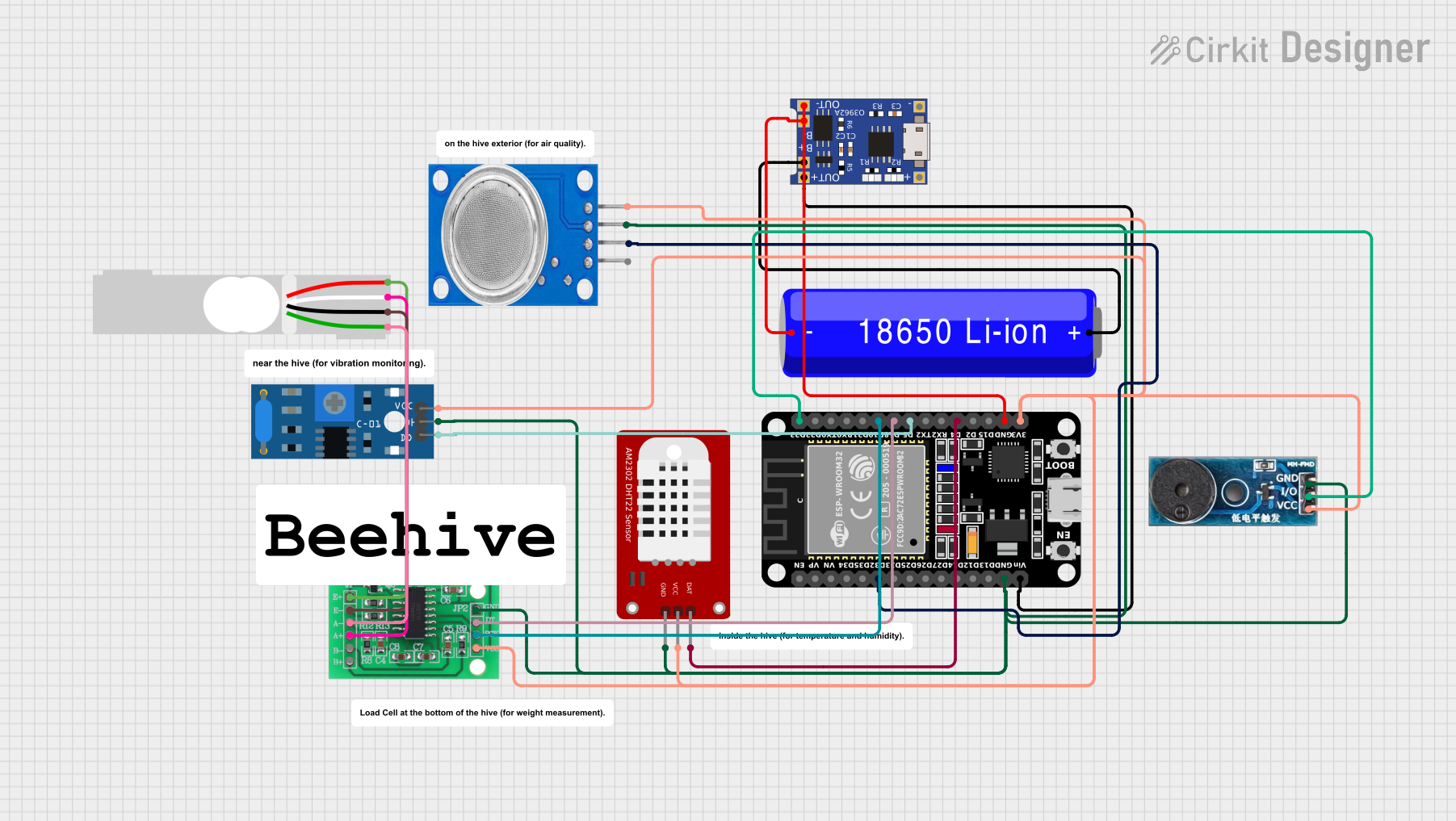
 Open Project in Cirkit Designer
Open Project in Cirkit Designer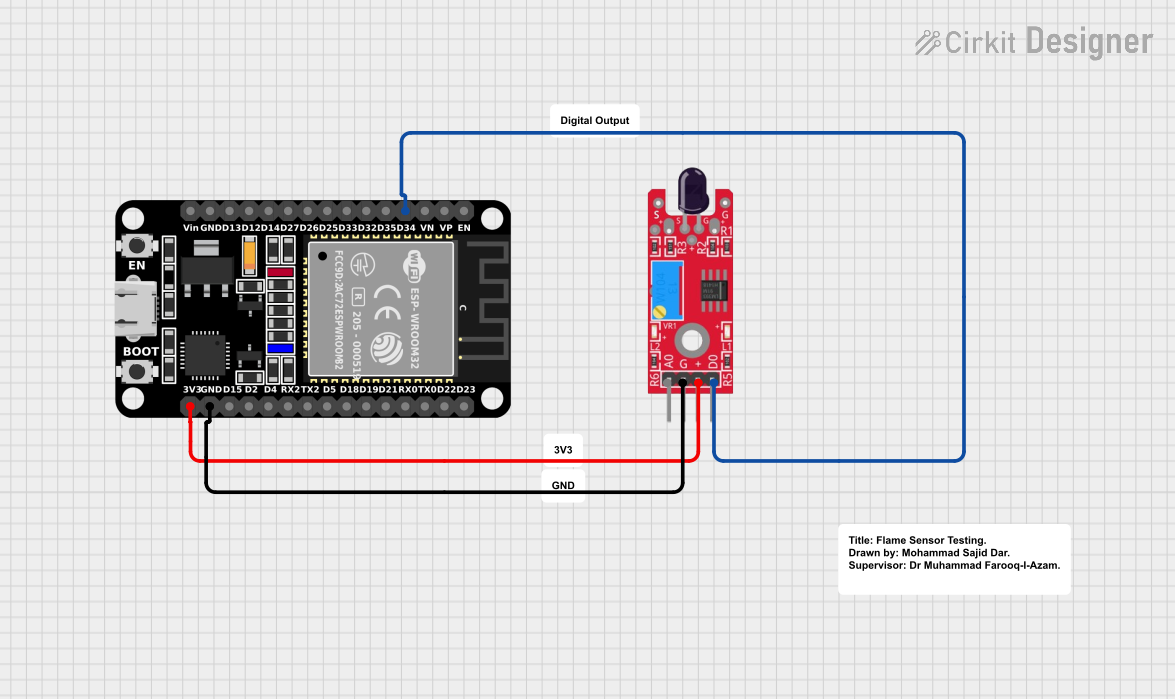
 Open Project in Cirkit Designer
Open Project in Cirkit DesignerExplore Projects Built with FireBeetle ESP32

 Open Project in Cirkit Designer
Open Project in Cirkit Designer
 Open Project in Cirkit Designer
Open Project in Cirkit Designer
 Open Project in Cirkit Designer
Open Project in Cirkit Designer
 Open Project in Cirkit Designer
Open Project in Cirkit DesignerCommon Applications and Use Cases
- IoT (Internet of Things) devices and smart home systems
- Wireless sensor networks
- Wearable technology
- Robotics and automation
- Data logging and remote monitoring
- Prototyping and educational projects
Technical Specifications
The FireBeetle ESP32 is built to provide robust performance while maintaining a compact form factor. Below are its key technical details:
Key Technical Details
| Parameter | Specification |
|---|---|
| Microcontroller | ESP32-D0WDQ6 |
| Clock Speed | Up to 240 MHz |
| Flash Memory | 16 MB |
| SRAM | 520 KB |
| Wi-Fi | 802.11 b/g/n |
| Bluetooth | BLE 4.2 and Classic Bluetooth |
| Operating Voltage | 3.3V |
| Input Voltage Range | 3.3V - 5V |
| GPIO Pins | 22 |
| ADC Channels | 6 (12-bit resolution) |
| DAC Channels | 2 |
| Communication Interfaces | UART, SPI, I2C, I2S, PWM |
| Power Consumption | Ultra-low power (deep sleep: ~10 µA) |
| Dimensions | 58 x 23 mm |
Pin Configuration and Descriptions
The FireBeetle ESP32 features a total of 22 GPIO pins, which can be configured for various functions. Below is the pinout description:
| Pin Number | Pin Name | Functionality |
|---|---|---|
| 1 | 3V3 | 3.3V Power Output |
| 2 | GND | Ground |
| 3 | D0 (GPIO0) | General Purpose I/O, Boot Mode Select |
| 4 | D1 (GPIO1) | UART TX |
| 5 | D2 (GPIO2) | General Purpose I/O |
| 6 | D3 (GPIO3) | UART RX |
| 7 | D4 (GPIO4) | PWM, ADC, General Purpose I/O |
| 8 | D5 (GPIO5) | PWM, ADC, General Purpose I/O |
| 9 | D6 (GPIO6) | SPI Flash (not recommended for GPIO) |
| 10 | D7 (GPIO7) | SPI Flash (not recommended for GPIO) |
| ... | ... | ... (Refer to the full datasheet) |
Note: Some GPIO pins are reserved for internal functions (e.g., SPI flash). Refer to the official datasheet for detailed pin usage guidelines.
Usage Instructions
The FireBeetle ESP32 is easy to integrate into a variety of projects. Below are the steps to get started and important considerations:
How to Use the FireBeetle ESP32 in a Circuit
Powering the Board:
- The board can be powered via the USB-C port or through the VIN pin (3.3V - 5V).
- Ensure the power supply is stable to avoid damage to the microcontroller.
Connecting Peripherals:
- Use the GPIO pins to connect sensors, actuators, or other modules.
- Configure the pins in your code according to the required functionality (e.g., input, output, ADC, PWM).
Programming the Board:
- Install the Arduino IDE and add the ESP32 board package via the Board Manager.
- Select "FireBeetle-ESP32" as the target board.
- Connect the board to your computer using a USB-C cable and upload your code.
Example Code: Blinking an LED
The following example demonstrates how to blink an LED connected to GPIO2:
// Define the GPIO pin where the LED is connected
const int ledPin = 2;
void setup() {
// Set the LED pin as an output
pinMode(ledPin, OUTPUT);
}
void loop() {
// Turn the LED on
digitalWrite(ledPin, HIGH);
delay(1000); // Wait for 1 second
// Turn the LED off
digitalWrite(ledPin, LOW);
delay(1000); // Wait for 1 second
}
Important Considerations and Best Practices
- Voltage Levels: Ensure all connected peripherals operate at 3.3V logic levels to avoid damaging the board.
- Deep Sleep Mode: Use the deep sleep mode to minimize power consumption in battery-powered applications.
- Pin Conflicts: Avoid using GPIO pins reserved for internal functions (e.g., GPIO6 - GPIO11 for SPI flash).
- Firmware Updates: Keep the ESP32 firmware updated to ensure compatibility with the latest libraries.
Troubleshooting and FAQs
Common Issues and Solutions
The board is not detected by the computer:
- Ensure the USB-C cable is a data cable (not just a charging cable).
- Check if the correct drivers for the USB-to-serial chip are installed.
Code upload fails:
- Verify that the correct board and COM port are selected in the Arduino IDE.
- Press and hold the "BOOT" button on the board while uploading the code.
Wi-Fi connection issues:
- Double-check the SSID and password in your code.
- Ensure the Wi-Fi network is within range and supports 2.4 GHz (ESP32 does not support 5 GHz).
GPIO pin not working as expected:
- Confirm that the pin is not reserved for internal functions.
- Check for short circuits or incorrect wiring.
FAQs
Q: Can the FireBeetle ESP32 be powered by a battery?
A: Yes, the board supports battery power through the JST connector or VIN pin. Ensure the battery voltage is within the supported range (3.3V - 5V).
Q: Is the FireBeetle ESP32 compatible with Arduino libraries?
A: Yes, the board is fully compatible with the Arduino IDE and supports most Arduino libraries.
Q: How do I reset the board?
A: Press the "RST" button on the board to perform a hardware reset.
Q: Can I use the FireBeetle ESP32 for Bluetooth applications?
A: Yes, the board supports both BLE (Bluetooth Low Energy) and Classic Bluetooth for a wide range of applications.
By following this documentation, you can effectively utilize the FireBeetle ESP32 in your projects. For more advanced features, refer to the official DFRobot datasheet and resources.